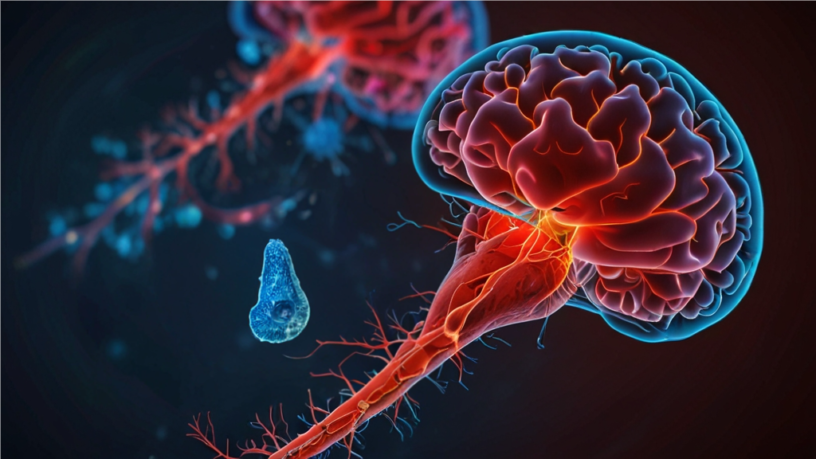Recently on July 3rd, a 14-year-old boy led to death by Brain-eating amoeba in Kozhikode, Kerala; this is the third case since May 2024. Amoeba is a small organism that lives in a variety of environments, such as soil, water, and air. In which two amoeba, Balamuthia mandrillaris and Naegleria fowleri, are pathogenic free-living species. These causes dangerous central nervous system infections (amoebic meningoencephalitis) and blinding keratitis that can be by the unhygienic use of contact lenses. Only less than 5% of patients survive if it is diagnosed at an early stage.
Infections were reported in immunocompetent children and young adults. However, all patients had a history of different activities nearby or in fresh water sources, such as swimming pools and hot springs, where parasitic brain eating amoeba lives.
Lack of public health awareness and poor diagnostic tools, especially in developing countries, cause cases of this disease to be underreported or under recognized globally.
Symptoms:
- Common signs of nervous system infections from viral and bacterial meningitis include fever, headache, stiff neck, vomiting, and convulsions.
- Infections last for a few days or even several months in the case of Naegleria fowleri.
Diagnose:
- By running Neuro-imaging laboratory tests i.e. Microscopy, PCR, Culture and IFA; however, they are not specific diagnostic measures.
- According to some cases, ESR (Erythrocyte sedimentation rate) and CRP (C- reactive protein) always be at higher level if a person has infection.
- Identification of this parasite is harder because it resembles macrophages (a White Blood cell that fights infection in human body), thus identified by lesions in brain lobes.
Treatment:
- After reviewing several reported cases of amoebic meningoencephalitis (Brain eating amoeba), doctors admitted no drug is effective for the treatment, and most cases lead to death.
- Prognoses (early detection) are essential for better survival chances.
Conclusion:
Naegleria fowleri (Brain-eating amoeba) can be present everywhere except Antarctica and prefers warm freshwater sources (rivers, lakes, pools, springs, and in drinking water distribution systems as well). The infectious amoebae enter in the body from nose to brain. Thus,
- If a water source is shallow and has a low flow range, try to avoid any activity there.
- Always use a nose clip and raise your head above water to avoid taking part in water activities.
- Avoid diving and jumping to the bottom of stagnant, untreated water bodies.
- If you have body cuts or wounds, stay away from water-related chores.
References:
- Ong TYY, Khan NA, Siddiqui R.2017.Brain-Eating Amoebae: Predilection Sites in the Brain and Disease Outcome. J Clin Microbiol55
- Ahmad Zamzuri, M.‘A.I.; Abd Majid, F.N.; Mihat, M.; Ibrahim, S.S.; Ismail, M.; Abd Aziz, S.; Mohamed, Z.; Rejali, L.; Yahaya, H.; Abdullah, Z.; et al. Systematic Review of Brain-Eating Amoeba: A Decade Update. Int. J. Environ. Res. Public Health 2023, 20, 3021. https://doi.org/10.3390/ijerph20043021.




Leave a Reply